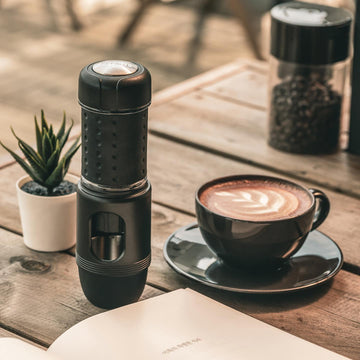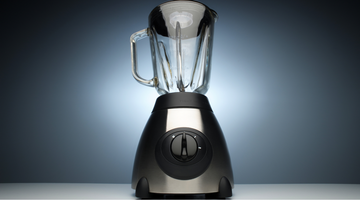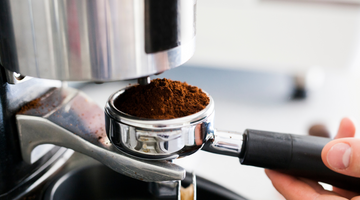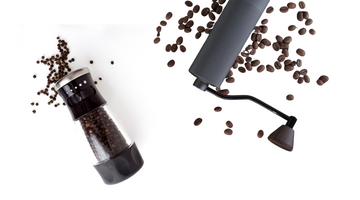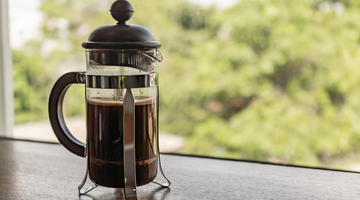Have you ever gone to make a fresh cup of coffee only to realize your coffee grinder is broken? You might be surprised to learn you can grind coffee in a blender. Yep, that trusty kitchen gadget can save the day. So, let's learn how to make it work, the pros and cons, and some tips to get the best results for your java.
Can you grind coffee beans with a blender?
The short answer is yes, you can! So, can a blender grind coffee beans? Absolutely. While it's not the traditional method, a blender can break down those beans into usable coffee grounds ideal for pour-over and drip coffee.
Here are some tricks to get it right:
How grinding coffee in a blender works

A blender's blades can chop coffee beans like a blade grinder, but they're not as precise as a dedicated coffee grinder. Blenders work better for coarse to medium grinds because the ground results are less consistent. So, if you're into French press or drip coffee, this method can work for you.
Advantages and disadvantages of grinding coffee with a blender
Advantages
-
Accessibility - almost everyone has a blender at home.
-
Convenience - it's quick and easy to use.
-
No extra gadgets - you don't need to buy a separate coffee grinder.
Disadvantages
-
Inconsistent grind size - blenders will give you a mix of coarse and fine particles.
-
Potential overheating - blades can get hot and affect the flavor of the coffee.
-
Limited control - Less precision compared to a coffee grinder.
A step-by-step guide to grinding coffee beans with a blender
Ready to give it a shot? Here's how to grind coffee beans in a blender.

-
Start by measuring out the amount of beans you need. Generally, a good ratio is two tablespoons of coffee beans per six ounces of water. It's best to grind fresh, so don't use too many beans.
-
Ensure your blender is clean and completely dry. Any moisture can affect the grind and the flavor of the coffee.
-
The best way to grind coffee beans in a blender is by using the pulse setting. This gives you more control over the grind size and helps prevent overheating the beans.
-
Pulse the blender in short, quick bursts. Aim for about 3-5 seconds at a time. Shake the blender gently between pulses to help distribute the beans evenly.
-
After a few pulses, check the grind size. If you're after a coarse coffee grind, you'll want to stop when the beans resemble coarse sea salt. For a medium grind, continue pulsing until the texture is similar to sand.
-
If your beans feel warm after grinding, let them cool before brewing. Overheating can negatively impact the flavor.
-
Clean your blender thoroughly to remove any coffee residue. This will prevent old coffee oils from affecting future blends or other foods you blend afterward.
Alternatives to using a blender for grinding coffee
If grinding coffee with a blender doesn't give you the results you want, here are a few other household items you can use instead.
Mortar and pestle
Add a small amount of beans to the mortar and use the pestle to crush them in a circular motion. It offers more control over the grind size and consistency than grinding coffee in a blender, but it's a bit labor-intensive and takes longer.
Rolling pin
Place the beans in a zip-lock bag or between two pieces of parchment paper. Roll over them with the rolling pin, applying even pressure. This is a simple and effective method to produce a coarse to medium grind, but it can make a mess and requires a bit of elbow grease.
Hammer or mallet
Like the rolling pin method, place the beans in a zip-lock bag and gently hammer them to the desired consistency. This is most effective for a coarse grind and best for pour-over or French press coffee. You'll have less control over the grind size, and it's pretty noisy.
Why a coffee grinder is the best option

While these alternatives can work in a pinch, a dedicated coffee grinder is the best tool for the job. Here's why:
Consistency and control
A coffee grinder, especially a burr grinder, offers thorough control over the grind size. This consistency is critical to achieving the perfect cup of coffee, whether you're brewing espresso, French press, or drip.
Quality of the grind
Using a grinder ensures that all the particles are uniform, producing an even extraction and a better-tasting cup of coffee.
For the ultimate grinding experience, check out the STARESSO Discovery II Grinder, designed to deliver perfect consistency and flavor every time.
So, can you grind coffee beans with a blender? Yes, you can, and it's a handy trick when you're in a pinch. While it's not as precise as a dedicated grinder, it can still produce a decent grind for brewing a satisfying cup of coffee.
Grinding coffee beans frequently asked questions
Can a blender grind coffee beans?
Yes, a blender can grind coffee beans, but it works best for coarse to medium grinds and may result in inconsistent particle sizes.
How do you grind coffee with a blender?
Measure the beans, set up the blender, and use the pulse setting in short bursts. Check the grind size periodically to ensure you get the desired consistency.
What is the best blender for grinding coffee?
Any high-speed blender with a pulse setting can be used for grinding coffee. Just ensure it has solid blades and a robust motor.
